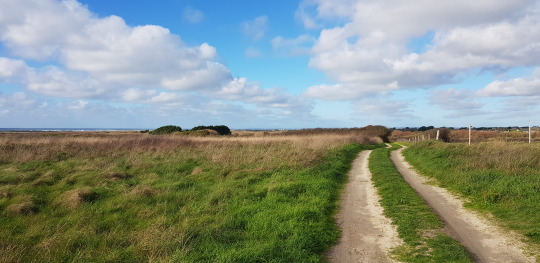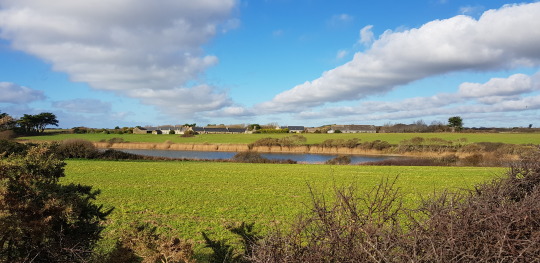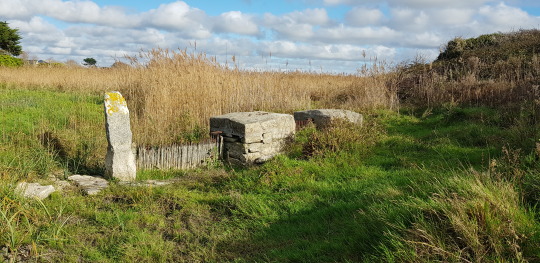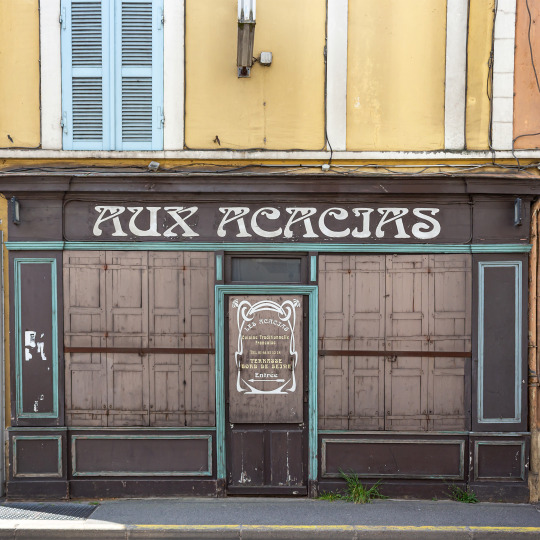#pêcheries
Text

0 notes
Photo

instant – 0005
27 notes
·
View notes
Text










Petite boucle afin de faire des repérages en vue d'un futur projet.
#marche#balade#repérage#découverte#patrimoine#histoire#culture#outdoor#lanscape#countryside#mégalithe#chapelle#pêcherie#bretagne#finistère#cornouaille#paysbigoudensud#baiedaudierne
6 notes
·
View notes
Photo

Carrelet à Talmont-sur-Gironde by Photographie d'un carrelet …
1 note
·
View note
Photo

Baie de Bourgneuf Loire Atlantique Pêcheries. Belle journée pour une balade au bords de l' eau vivifiante. 4 novembre 2022 Dominique Dubois #baiedebourgneuf #loireatlantique #pêcherie#pecherie#ocean #oceanatlantique #baie#nature #naturephotography #naturelovers #loireatlantique #mer#plage#paysdelaloire #igersloireatlantique https://www.instagram.com/p/Cklrt_lNF7V/?igshid=NGJjMDIxMWI=
#baiedebourgneuf#loireatlantique#pêcherie#pecherie#ocean#oceanatlantique#baie#nature#naturephotography#naturelovers#mer#plage#paysdelaloire#igersloireatlantique
1 note
·
View note
Text
La Normandie et les peintres 5
La Normandie et les peintres 5

View On WordPress
#Adolphe Gumery#Albert-Pierre Dawant#Casimir Destrem#Charles Euphrasie Kuwasseg#Charles-François Marchal#Criquebeuf#Emile-Auguste Pinchard#Georges Diéterle#Jacques-Louis David#Jean-Pierre Laurens#Léon-Matthieu Cochereau#Musée des Pêcheries (Fécamp)#Pays de Caux#Pierre Outin#Pierre-Marie Beyle#St Thomas Becket#Tour d&039;abandon#Yport
0 notes
Text
Bretange / la plaine sur mer - pêcherie
Bretange / la plaine sur mer – pêcherie
Bretange / la plaine sur mer – pêcherie worden deze tres charmante hutjes genoemd – bij ons in de eilandspolder noemen ze zo’n net een totebel- veel kleiner en zonder hutje op palen – je kan van Fransen veel leren – als je over een jaar per ongeluk verdwaalt in de eilandspolder en je ziet zo’n cabana dan weet je dat ik aan het timmer ben geweest –

View On WordPress
#Bretange#camping Bretange#Frankrijk aan de kust#frankrijk toerisme#la pêcherie#la plaine sur mer#Les pêcheries#pêcherie#trabucco#vakantie Bretagne#Visserhuisjes#Visserhuisjes Bretagne#zininfrankrijk
0 notes
Note
Some info on Simone Évrard? :3
I’m basing the majority of this answer on this great article, so if I’m not citing a source for where I’ve found something, just assume it’s from there.
Simonne was born and baptised on February 6 1764. Here is her baptism record:
Simonne, legitimate daughter of Sr Nicolas Évrard, boat carpenter, and of Dame Catherine Large, her father and mother, was baptized on February 6, 1764 by the vicar of Saint-André, undersigned. The godfather was Sr Jacques Rivaud, and the godmother Dame Simone Rivard who signed with the present father.”
Signed: Nicolas Évrard, Jacques Rivaud, Simone Rivard and Fontanel, vicar.
Simonne’s father Nicolas (born May 4 1724) had already been married to one Catherine Baret, with whom he had had a daughter, Philiberte (born February 28 1762). After remarrying Simonne’s mother Catherine Large he had three daughters more, Simonne, Etiennette (born October 4 1766) and Catherine (born September 16 1769). It’s most probable is that they benefited from a certain education at the free school of the hospice of charity of Tournus.
Nicolas Évrard was was a boat worker-carpenter and owned a house located in the Pêcherie district, Saint-André parish, on the Quai du Nord, in Tournus. Catherine Large owned a copse in Charne and another piece of land, of little value, five kilometers from Tournus. In 1774, she died, and two years later, on February 18, her husband did as well. Philiberte was 14, Simonne, 12, Etiennette, 10 and Catherine, 7. According to oral tradition, the girls were then sent to Paris where they worked for a lingerie workshop ran by a woman from Tournus. It’s indicated that Etiennette and Catherine, the two youngest sisters, married Antoine Bezancenot, a cook, and Jean-Antoine Corne, a printer, respectively.
A brochure written by Jacques Roux (Jacques Roux à Marat) in response to an attack made by Marat on July 4 1793, reveals both the adress on which Simonne lived on during the revolution, as well as the fact that she lived with two of her sisters (we know one of these was Catherine, the youngest).
You (Marat) must remember that about fifteen months ago you sent Citizen Fainault, sculptor, to my house to ask me to come and speak to you on important business. You were then staying with the three Hevrard (sic) sisters, rue Saint-Honoré, n. 243, opposite the Café Richard, Maison du Pelletier.
That Marat lived at Simonne's home, was also confirmed by Simonne herself during the unsealing of her apartent on July 26, 1793. Here we also learn that Simonne played an active role in the printing and distribution of Marat’s works:
When citizen Marat came to live with her (Simonne), he was in the greatest distress; to help him with the printing and distribution of his newspaper she consumed the greater part of her fortune in order to serve him and stand up for what she believed right.
When it comes to Simonne’s first meeting with Marat (who was 19 years older than her), we only know it happened before January 1 1792. From that date we have this promise written in Marat’s hand:
The fine qualities of Mademoiselle Simonne Évrard having captivated my heart from which she received the homage, I leave her as a pledge of my faith, during the trip I am going to make to London, the sacred commitment to give her my hand immediately after my return; if all my tenderness were not enough for her to guarantee my fidelity, may the oblivion of this commitment cover me with infamy.
Paris, 1 January 1792.
Jean-Paul Marat, l’ami du peuple
Marat and Simonne were never officially married, just engaged. According to an article in Journal de la Montagne written ten days after Marat’s death — that is to be taken with some grain of salt — the two had had an unofficial wedding ceremony:
Marat, who did not believe that a vain ceremonial was what formed the engagement of the marriage, wishing nevertheless not to alarm the modesty of citoyenne Évard, called her one fine day at the window of his room; clasping his hand in that of his lover, both prostrate before the face of the Supreme Being, "It is in the vast temple of nature," he said to her, "that I take for witness to the eternal fidelity that I swear to you, the Creator who hears us.
Simonne was present when Marat was murdured. In the interrogation of Charlotte Corday, we can read the following:
I arrived at Marat’s in a carriage around eleven or eleven-thirty.
What did you do when you arrived?
I asked to speak with him
You asked to speak with him?
Having asked to see him in his antechamber, two or three women presented themselves and told me that I would not enter. I insisted and one of the women went to tell Marat that a citoyenne wanted to speak with him. He answered that I couldn't enter. I went back home where I returned around noon.
[…]
I went out seven o’clock in the evening to go home to Marat (again).
Did you find him there?
Yes.
Who introduced you?
The same women that had refused me that morning.
The women here are Simonne, her sister Catherine and the portress Marie-Barbe Aubain.
Simonne was later called as a witness to Corday’s trial, during which she said the following:
Citoyenne Évrard deposes that the accused presented herself on the morning of July 13, at citizen Marat’s place, where she, deponent, lived; that on the replies that the deputy was ill and could receive no one, she withdrew, murmuring.
The accused interrupts the testimony of the witness, saying: it was I who killed him.
”Citoyenne Évrard (Simonne) testified that the accused appeared on the morning of July 13 at the home of citizen Marat, where she, the deponent, lived; that she wrote a letter which made him receive her on Saturday at 8 o'clock in the evening; that a cry from the chamber where Marat's bathtub was made her come running; she found the accused standing against a curtain in the antechamber, grabbed her by the head and called for neighbors; these neighbors having come, she ran to Marat who looked at her without saying a word; she helped him out of the bath and he expired without uttering a word.”
Other witnesses were also called, many of which reported Marat’s last words to have been a call for help to Simonne:
”Laurent Basse, courier, testifies that being on Saturday, July 15 (sic), at Citizen Marat's house, between seven and eight o'clock in the evening, busy folding newspapers, he saw the accused come, whom citoyenne Évrard and the portress refused entrance. Nevertheless, citizen Marat, who had received a letter from this woman, heard her insist and ordered her to enter, which she did. A few minutes later, on leaving, he heard a cry: Help me, my dear friend, help me! (À moi, ma chere amie, à moi !). Hearing this, having entered the room where citizen Marat was, he saw blood come out of his bosom in great bubbles; at this sight, himself terrified, he cried out for help, and nevertheless, for fear that the woman should make an effort to escape, he barred the door with chairs and struck her in the head with a blow; the owner came and took it out of his hands.
The president challenges the accused to state what she has to answer.
I have nothing to answer, the fact is true.
One listens to another witness.
Jeanne Maréchal, cook, submits the same facts; she adds that Marat, immediately taken from his bathtub and put in his bed, did not stir.
The accused says the fact is true.
One listens to another witness.
Marie-Barbe Aubin, portress of the house where citizen Marat lived, testifies that on the morning of July 13, she saw the accused come to the house and ask to speak to citizen Marat, who answered her that it was impossible to speak to him at the moment, attenuated the state where he had been for some time, so she gave a letter to deliver to him. In the evening she came back again, and insisted on speaking to him. Aubin and citoyenne Évrard refused to let her in; she insisted, and Marat, who had just asked who it was, having learned that it was a woman, ordered her to be let in; which happened immediately. A few moments later, she heard a cry: "Help me, my dear friend (À moi, ma chere amie !);she entered, and saw Marat, blood streaming from his bosom; frightened, she fell to the floor and shouted with all her might: À la garde! Au secours !
The accused says that everything the witness says is the most exact truth.
Catherine Évrard gives the same story as her sister.
Once again, the accused answers that all the facts are true and she has nothing to respond.
As already mentioned, Simonne was present for the removal of seals of her apartment on July 26 1793, two weeks after the murder:
In front of us appeared citoyenne Simonne Évrard, an adult, residing in the apartment where we currently are [30 rue des Cordeliers] who told us and declared that she is the tenant of said apartment which she rents from citizen de Lafondée, that all its furniture and effects belong to her, with the exception of the mirrors and papers that belong to said de Lafondée and the papers, linens and clothes of the deceased Marat.
S. Évrard
On 8 August, less than a month after the death of Marat, Simonne presented herself at the Convention and defended his memory, in her eyes hijacked by the Énrages:
”Citizens, you see before you the widow Marat; I do not come to ask you for favors coveted by cupidity or demanded by poverty. The widow Marat needs only a tomb. Before arriving at this happy end of the torments of my life, I come to ask you for justice for the new attacks committed against the memory of the most intrepid and most outraged defender of the people. These watches, how much gold they lavished! How many hypocritical libellists they have paid to cover his name with opprobrium! With what horrible obstinacy they endeavored to give him a colossal political existence, and a hideous celebrity, with the sole view of dishonoring the cause of the people which he faithfully defended; today all covered with his blood; they pursue him to the bosom of the tomb; every day they still dare to assassinate his memory; they strive at will to paint in the features of an interesting heroine the monster who plunged the parricide blade into his bosom. One sees even in this enclosure the most cowardly of all the folliculars, Carra, Ducos, Dulaure, boasting of it shamelessly in their periodical pamphlets, to encourage their equals to cut the throats of the rest of the defenders of liberty. I am not speaking of that vile Pétion who, at Caen, in the assembly of his accomplices, dared to say, on this occasion, that the assassination was a virtue.
Sometimes the villainous perfidy of the conspirators, pretending to pay homage to his civic virtues, multiplies at great expense infamous engravings, where the execrable assassin is presented under favorable features, and the martyr of the fatherland, disfigured by the most horrible convulsions. But here is the most perfidious of their maneuvers: they have bribed Scelerais writers who impudently usurp his name, and disfigure his principles, to perpetuate the empire of calumny of which he was the victim. The cowards, they flatter first the pain of the people by their praise; they trace some true pictures of the evils of the country; they denounce some traitors dedicated to its contempt; they speak the language of patriotism and morality, so that the people believe they still hear Marat; but it is only to defame afterwards the most zealous defenders whom the patrie has preserved; it is to preach, in the name of Marat, extravagant maxims that his enemies have attributed to him, and that all his conduct disavows.
I denounce to you in particular two men, Jacques Roux and the named Leclerc who claim to continue his patriotic sheets, and to make his shadow speak to outrage his memory and deceive the people: it is there that after having debited revolutionary common places, the people are told that they must proscribe all kinds of government; it is there that we order in his name to bloody the day of August 10, because from his sensitive soul, torn by the spectacle of the crimes of tyranny and the misfortunes of humanity, just anathemas have sometimes come out against public leeches, and against the oppressors of the people; they seek to perpetuate after his death the parricidal calumny which persecuted him, and presented him as a foolish apostle of disorder and anarchy.
And who are these men who claim to replace him? It is a priest wh, the very day after the day when the faithful deputies triumphed over their cowardly enemies, came to insult the National Convention by a perfidious and seditious address: it is another man, no less perverse, associated with the mercenary furies of this impostor.
What is quite remarkable is that these two men are the same as those who were denounced by Marat, a few days before his death, at the Cordeliers club, as people paid by our enemies to disturb the public tranquility, and who, in the same sitting, were solemnly driven from the bosom of this popular society. What is the purpose of the treacherous faction that continues these criminal plots? It is to debase the people who pay homage to the memory of him who died for his cause; it is to defame all the friends of the country, whom she has designated under the name of Maratists; it is to mislead perhaps all the Frenchmen of the entire Republic, who gather for the meeting of August 10, by presenting to them the perfidious writings of which I speak, like the doctrine of the representative of the people whom they slaughtered; it is perhaps to disturb these solemn days by some disastrous catastrophe.
Gods! what would be the destiny of the people, if such men could usurp their confidence! What is the deplorable condition of its intrepid defenders, if death itself cannot save them from the rage of their assassins! Legislators, how long will you allow crime to insult virtue? Whence comes to the emissaries of England and Austria this strange privilege of poisoning public opinion, of devoting the defenders of our laws to daggers, and of undermining the foundations of our nascent Republic? If you leave them unpunished, I denounce them here to the French people, to the universe. The memory of the martyrs of freedom is the patrimony of the people: that of Marat is the only good that remains to me; I dedicate to his defense the last days of a languid life. Legislators, avenge the fatherland, honesty, misfortune and virtue, by striking down the most cowardly of all their enemies.”
A few days after the speech, August 22 1793, Marat’s siblings signed the following decree:
We therefore declare that it is with satisfaction that we fulfill the wishes of our brother by recognizing citoyenne Évrard as our sister, and that we will hold as infamous those of her family members who does not share the feelings of esteem and gratitude that we owe her, and if against our expectation there could be some, we ask that their names be known, as we do not want to share their infamy.
Written in Paris, August 22, second year of the republic.
Marie-Anne Mara (sic) f. Oliver
Albertine Mara (sic)
Jean-Pierre Mara (sic)
In her Réponse aux détracteurs de l’Ami du Peuple (1793) Albertine Marat also wrote the following regarding Simonne:
Finding no recourse except in the poor, he would have succumbed to his misfortunes. People, your good genius decided otherwise: he allowed a divine woman, whose soul resembled his own, to consecrate her fortune and her rest to keep you your friend. Heroic woman, receive the homage your virtues deserve: yes, we owe it to you. Inflamed with the divine fire of freedom, you wanted to preserve its most ardent defender. You shared his fate and his tribulations: nothing can stop your zeal, you sacrifice to the Friend of the People, and the fear of your family, and the prejudices of your century. Forced here to circumscribe myself, I would wait for the moment when your virtues will appear in all their brilliance.
Both this extract and the decree cited before would imply that someone(s) in Simonne’s family didn’t appriciate her attachment to Marat/the revolution, although I’ve not found more info regarding it.
On September 15 1794, Robert Lindet, by then president of the committee of public intruction, wrote to Simonne asking her opinion on a republication of Marat’s works — ”Write as soon as possible and make known to what extent you can contribute to the requested edition of the works of Marat. This enterprise must be executed in a way that honors the author and the nation equally.”
But Simonne rejected this invitation, answering in November the same year that she did not want to entrust anyone but herself with this duty. The 15 volumes of Oeuvres politiques de Marat were indeed published with Simonne as the editor. A reedition of Marat’s 1790 work Plan de législation criminelle was also published, but after this the revolution took a swing to the right, during which it no longer needed Marat as a martyr. On February 22 1795 the republishing of his works was ordered to be interrupted.
On December 30 1800, Simonne was briefly taken in and interrogated as ”suspect.”
Your name, your adress, your means of living?
I’m 36 years old, I have a pension, I live with my sister on rue Saint-Jacques, n 674, division of Thermes.
Why have you been arrested?
I don’t know.
Where were you on 3 nivôse (December 24)?
I was at my place the whole day
Who was it you received at your place?
Nobody.
You did however have company in the evening, one saw some people sitting at a table lighted up by three candles.
I soaped the whole day, I wasn’t finished until nine in the evening. My sister had only her lamp, she works at the horology. I only went out to buy a bottle of wine, and I supped with my sister. I haven’t received three people in one décade.
Who are the people you have been seeing since one month?
We only see citoyen Ranus, a watchmaker who lives on rue de la Barillerie who provides work for my sister. There came a citizen from our country who’s name I don’t remember.
Who are your neighbors?
Citoyen Digard, baker and owner, the rest of the house is inhabitated by women.
By refusing to name the people you’re receiving, you make it sound like you’re receiving enemies of the government.
I’ve told you the exact truth. I haven’t received anyone, because I find myself in great distress.
The commissioner sends her off, the case had no consequences.
Simonne came to live together with Marat’s sister Albertine (born 1760), first on rue Saint-Jacques, later on Rue de la Barillerie n. 33 (today boulevard du Palais) until her death in 1824. I’ve not found any primary source mentioning that she died from falling down a staircase, like what is reported on for example wikipedia.
M. Goupil-Louvigny confirmed Albertine’s attachment to Simonne:
I have reason to believe that the widow Marat was not an ordinary woman, because her sister-in-law spoke to me about her with enthusiasm. Albertine religiously kept all that had belonged to her. I was personally charged in the last years of her life, when necessity compelled her to do so, to sell various objects and clothes which came from her, which were of a certain elegance and of great distinction.
We have some descriptions of Simonne’s apperence. An official minute from 1792, shortly after Marat’s death, affirmed the following: “Height: 1m, 62, brown hair and eyebrows, ordinary forehead, aquiline nose, brown eyes, large mouth, oval face.” The minute for her interrogation instead say: “grey eyes, average mouth.”
Finally, we have the following anecdote told by doctor Joseph-Souberbielle:
In the year 1820 I was often called in to attend a woman who was known in the house where she lived as the widow Marat. I am convinced she was only Marat's mistress. She told me in confidence that, since the Restoration, she had been met with such cruel treatment at the hands of the neighbours that she intended to migrate to another part of the town and change her name. She was extremely plain and could never have had any good looks. She assured me that in the whole course of her "married life" Marat had never given her a single cause for contempt; that he had all gentleness and consideration in his home relations, but his fanaticism was so intense that he would cheerfully have sacrificed his life to bring about the triumph of his ideals. I know nothing more of the woman.
Like in the case of Gabrielle and Louise-Sébastienne, I found texts about Simonne that listed more details regarding her (1, 2, 3, 4), but once again, I don’t know if those details are actually legit or just embellishments, since the authors don’t cite any sources.
There actually exists a full biography on Simonne, but 1, I couldn’t find it online for free, and 2, it’s written in Italian which I don’t know a word of.
#stupid tumblr wouldn’t let me post Simonne’s speech as one big paragraph#Simonne évard#marat#jean-Paul marat#albertine marat#albertine and simonne were basically the anti charlotte and éleonore#frev#ask
27 notes
·
View notes
Photo

Rue de la Pêcherie, Corbeil-Essonnes (Essonne).
Avril 2022.
19 notes
·
View notes
Photo

Sidon
Sidon est le nom grec (signifiant "pêcherie") de l'ancienne ville portuaire phénicienne également connue sous le nom de Saïda dans ce qui est aujourd'hui le Liban (situé à environ 25 miles au sud de Beyrouth). Avec la ville de Tyr, Sidon était la cité-État la plus puissante de l'ancienne Phénicie et fut la première à fabriquer la teinture pourpre qui fit la renommée de Tyr et qui était si rare et si chère que la couleur pourpre devint synonyme de royauté.
Lire la suite...
4 notes
·
View notes
Photo

Pêcherie, coucher de soleil. Pellicule « Halo », par @hanalogital (à Plage Nord de Fouras) https://www.instagram.com/p/ChJaVR5ofP5/?igshid=NGJjMDIxMWI=
13 notes
·
View notes
Photo

Boutiques détruites par les allemands, quai de la pêcherie, Lyon, Rhône, septembre 1944.
5 notes
·
View notes
Text

Pêcherie by av peteghium https://www.artlimited.net/1055126/art/photographie-pecherie-numerique-nature-paysage-aquatique-lac-riviere/en/11905088
1 note
·
View note
Text
Shinrin-Yoku : L'Art Japonais du Bain de Forêt, une Pratique Apaisante près de Nevers

Dans un monde où le rythme effréné de la vie quotidienne semble être la norme, la recherche de moyens pour se détendre et se reconnecter avec la nature est devenue une priorité pour de nombreuses personnes. Parmi les nombreuses pratiques visant à promouvoir la santé et le bien-être, le shinrin-yoku, également connu sous le nom de "bain de forêt" japonais, s'est imposé comme une méthode particulièrement efficace et bénéfique. Cette pratique ancienne, bien qu'ayant ses origines au Japon, a gagné en popularité dans le monde entier en raison de ses nombreux bienfaits pour la santé mentale et physique.

Origines et Évolution du Shinrin-Yoku :
Le terme "shinrin-yoku" a été initialement introduit au Japon dans les années 1980 par le ministère japonais de l'Agriculture, des Forêts et des Pêcheries. Cependant, l'idée sous-jacente de se connecter avec la nature pour améliorer la santé remonte à des siècles. Dans la culture japonaise, une relation profonde avec la nature est traditionnellement valorisée, et les pratiques comme le shinrin-yoku étaient considérées comme des moyens de renforcer cette connexion.La pratique du shinrin-yoku implique de se promener lentement et délibérément à travers une forêt, en prenant le temps d'observer et d'apprécier pleinement l'environnement naturel. Contrairement à une randonnée ordinaire, qui peut être axée sur l'atteinte d'un objectif ou d'un point de destination, le shinrin-yoku se concentre sur le processus même de se promener dans la forêt et d'absorber l'énergie et la beauté de la nature qui nous entoure.
Les Principes du Shinrin-Yoku :

Au cœur du shinrin-yoku se trouve la pratique de la pleine conscience. Les participants sont encouragés à utiliser tous leurs sens pour s'engager pleinement avec leur environnement. Cela signifie non seulement observer les arbres, les plantes et les animaux, mais aussi écouter le bruissement des feuilles dans le vent, sentir le parfum des fleurs sauvages et ressentir la texture du sol sous leurs pieds.L'un des aspects les plus importants du shinrin-yoku est la pratique de la respiration consciente. Les participants sont encouragés à respirer profondément et régulièrement, en prenant conscience de chaque inhalation et exhalation. Cette pratique de respiration lente et régulière est connue pour réduire le stress, calmer l'esprit et favoriser un sentiment de bien-être général.
Bienfaits pour la Santé :
Les bienfaits du shinrin-yoku sur la santé mentale et physique ont été largement étudiés et documentés. Plusieurs recherches ont montré que passer du temps dans la forêt peut réduire le niveau de stress, d'anxiété et de dépression. En s'immergeant dans un environnement naturel, les participants peuvent échapper aux pressions et aux distractions de la vie moderne, ce qui leur permet de se détendre et de se ressourcer.De plus, le shinrin-yoku a été associé à des améliorations physiologiques mesurables, telles qu'une réduction de la pression artérielle, une augmentation de l'activité du système immunitaire et une amélioration de la qualité du sommeil. Des études ont également montré que le shinrin-yoku peut avoir des effets positifs sur la concentration, la créativité et la fonction cognitive.
Pratiquer le Shinrin-Yoku :
Le shinrin-yoku peut être pratiqué par n'importe qui, quel que soit son âge ou son niveau de forme physique. Il n'est pas nécessaire d'avoir un équipement spécial ou de suivre un itinéraire particulier - l'objectif est simplement de se rendre dans une forêt et de se laisser guider par ses instincts. Il est recommandé de passer au moins deux heures dans la forêt pour bénéficier pleinement des effets du shinrin-yoku, bien que même de courtes promenades puissent être bénéfiques.

Impact sur l'Environnement :
En plus de ses bienfaits pour la santé individuelle, le shinrin-yoku peut également avoir un impact positif sur l'environnement. En encourageant les gens à passer du temps dans la nature et à développer un amour et un respect pour les espaces naturels, le shinrin-yoku peut contribuer à la sensibilisation et à la conservation de l'environnement.
Shinrin-Yoku à Nevers :

La ville de Nevers, située dans la région de Bourgogne-Franche-Comté en France, offre un cadre idéal pour pratiquer le shinrin-yoku. Entourée de nombreuses forêts magnifiques, telles que la Forêt de Bertranges, la Forêt Domaniale des Vaux d'Yonne et la Forêt Domaniale de Tronçais, Nevers offre aux résidents et aux visiteurs une multitude d'options pour se reconnecter avec la nature et améliorer leur bien-être.En outre, l'Hôtel de Verdun à Nevers propose un hébergement confortable et pratique pour ceux qui souhaitent explorer la région et profiter des bienfaits du shinrin-yoku. Situé au cœur de la ville, l'hôtel offre un accès facile aux sentiers forestiers environnants, permettant aux clients de se plonger facilement dans l'expérience apaisante du bain de forêt.
Le shinrin-yoku, ou bain de forêt japonais, est bien plus qu'une simple promenade dans les bois. C'est une pratique profonde et significative qui nous invite à ralentir, à être présents et à apprécier pleinement la beauté et la tranquillité de la nature qui nous entoure. Avec ses nombreux bienfaits pour la santé mentale, physique et émotionnelle, le shinrin-yoku offre une voie vers le bien-être et l'harmonie dans un monde souvent chaotique et stressant. En adoptant cette ancienne tradition japonaise, nous pouvons tous trouver la paix et la sérénité en nous reconnectant avec la nature et en honorant le lien sacré qui nous lie à notre environnement naturel.
Résumé de la pratique et des bienfaits du shinrin-yoku
Choisissez une forêt calme et accessible.
Prévoyez au moins deux heures pour votre bain de forêt.
Marchez lentement et sans but précis.
Laissez-vous guider par vos sens.
Éteignez votre téléphone portable et déconnectez-vous du monde numérique.
Respirez profondément et soyez attentif à votre environnement.
Si vous le souhaitez, vous pouvez pratiquer la méditation ou le yoga en forêt.
Read the full article
1 note
·
View note

